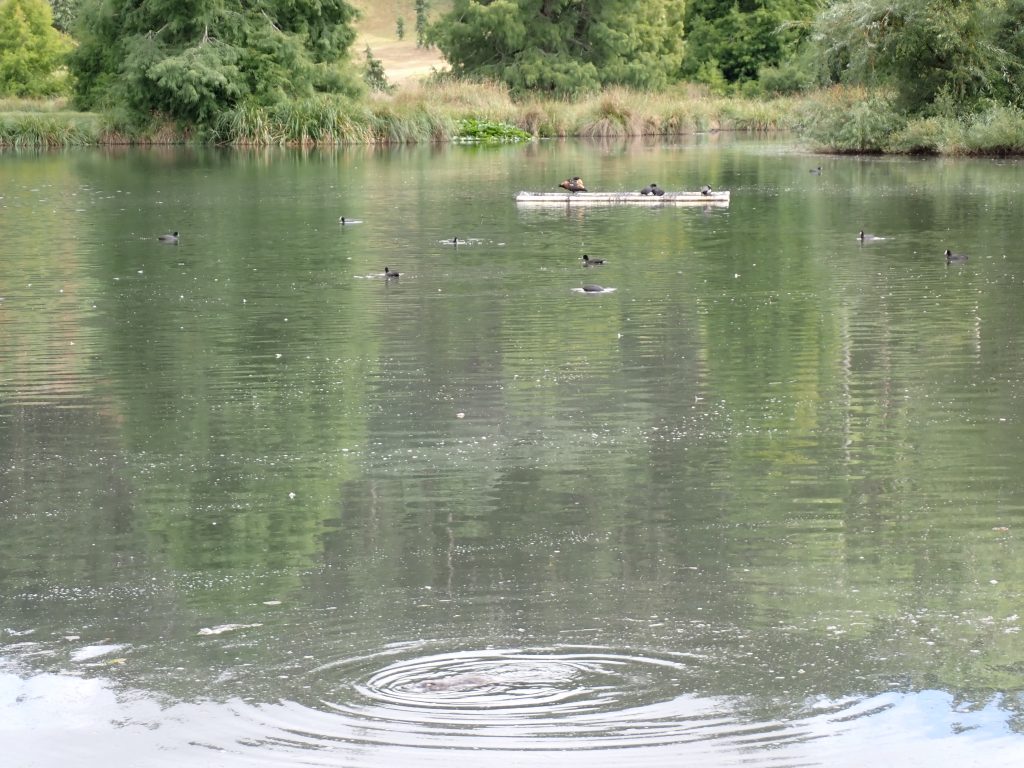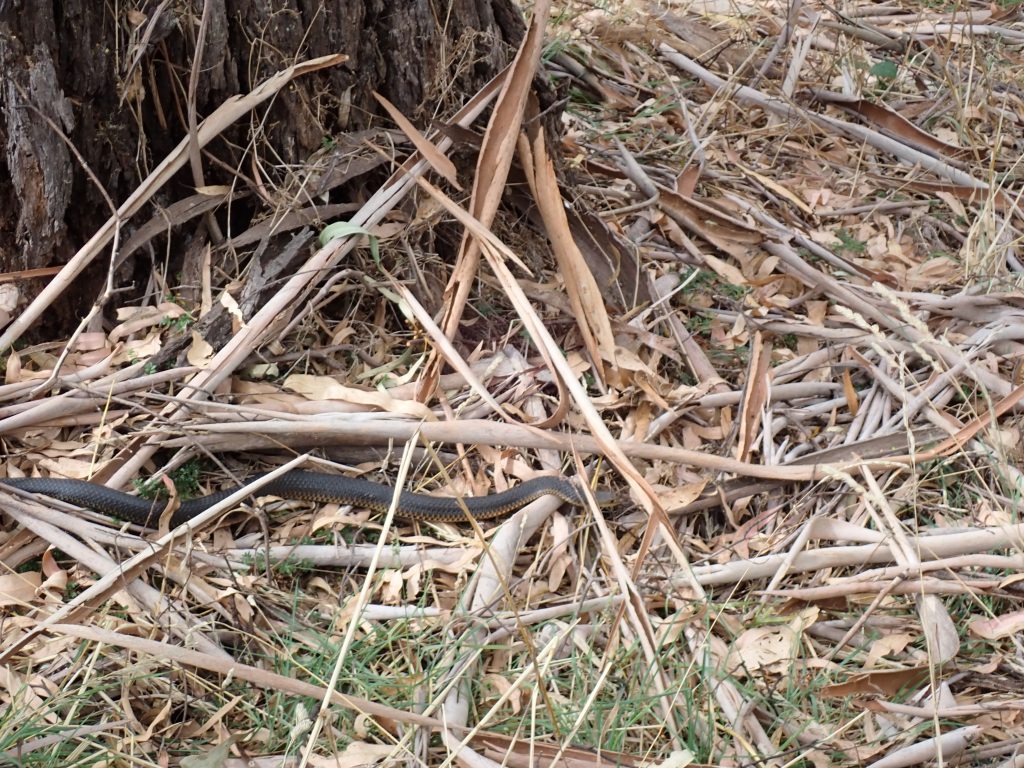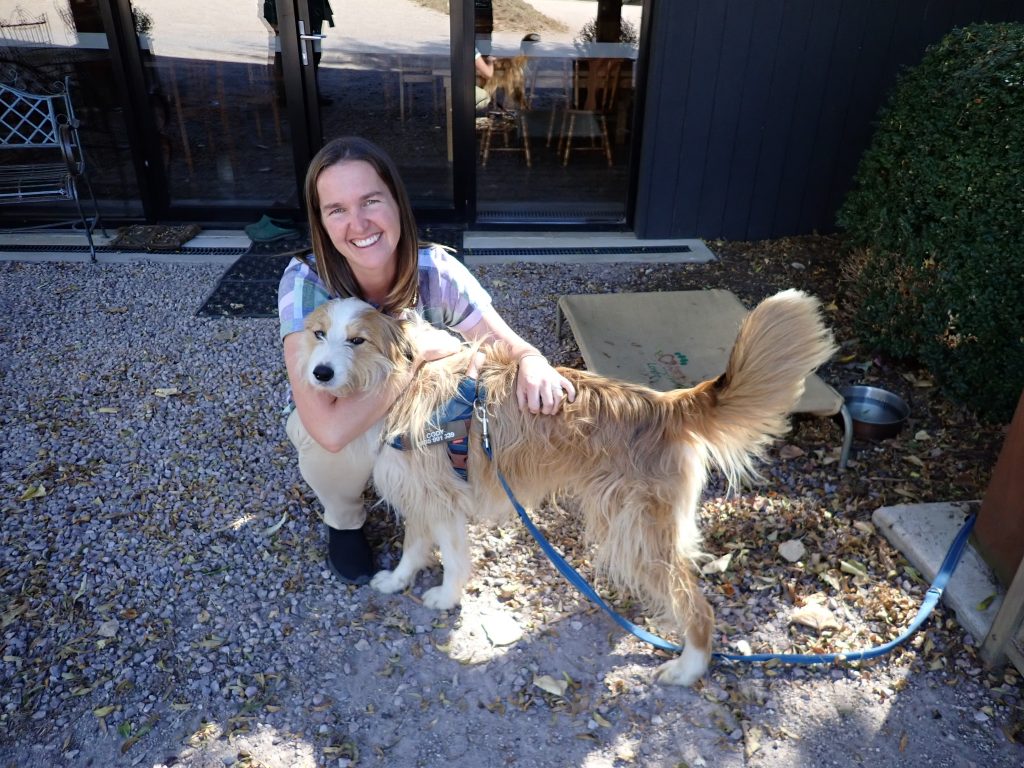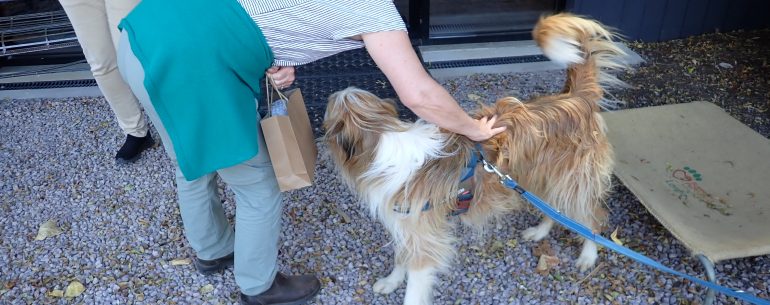Around 9am the Spirit of Tasmania squeezed its way down the Mersey River and into Devonport and fairly slickly we disembarked. From there the first stage went according to plan – the pre-loved car (pre-loved to the tune of 300,000km!) was waiting for us just a couple of minutes walk away and so we headed for the Devonport Information Centre. This stage was more mixed. The lady at the information office was brilliant – really helpful and full of good (and sensible) advice. The traffic warden outside was less helpful – I hadn’t realised it was paid for parking outside, so I managed to get my first parking ticket!
The plan was to go on a platypus hunt and the advice had been to head for the Tasmanian Arboretum. The very helpful volunteer there pointed us in the right direction and we headed off trying to manage our expectations as they are notoriously shy. However, as we walked round the lake, we suddenly started spotting them. We were not sure how many ‘them’ there were as it might have been one or two moving around a lot, but we started to get the hang of how to spot them. They feed on invertebrates on the bottom, but have to surface every minute or so. When they surface, a slight hump is visible and then within a few seconds they dive again. They were quite active and this is apparently because they have to eat between 15 and 30% of their body weight every day. Considering they eat small invertebrates, this amounts to a lot of feeding each day. Adult males can weigh up to 2.6kg and be around 50cm long, but the females are smaller. They have a double layer of fine dense fur, apparently even denser than that of polar bears and otters, and this enables them to keep warm by trapping air against their skin. We were delighted to see them – we tried to see them and failed miserably many years ago.

After an exhausting platypus-spotting session we decided to take a gentle walk around the arboretum and look at the Tasmanian, New Zealand and Native Australian collections. I was about to step down a little to photograph and attractive blue gum and recoiled rapidly. I am not a fan of anything herpetological and of all the reptiles and amphibians, snakes rank right at the bottom. So, seeing a snake under the gum prompted a more rapid reaction than is usual at my age. This was a good idea, particularly given that this was a Tiger Snake – the most venomous on Tasmania. Their venom from a bite can be 35–65 mg. The lethal dose for humans is 3 mg. This does seem something of an over-kill (and also a very bad pun ….!).

All this stress required a medicinal treatment and the perfect one was available at the arboretum kiosk – a delicious homemade leatherwood honey ice cream. This is apparently a Tasmanian speciality and rightly so – perfect snake stress treatment …..
The volunteer at the arboretum (who also made the ice cream) told us about the Tasmanian tasting trail and one of the places on the way to Cradle Mountain was a truffle farm called Truffledore. We couldn’t resist …. We were the only people there and so we got a fascinating personalised tour around their products and the nature of the truffles. They have planted hazels and oaks for the truffles as they grow French Black Winter (or perigord) truffles. After getting us to smell the truffles and asking us to describe what we thought they smelt like, she realised that vocabulary was not our strong point as words completely failed us! So, she then took us through a tasting with truffle oil and truffle oil complemented with Dukkah made from the hazelnuts which they crop from the trees.
The truffles are harvested during winter (June to August). Traditionally truffle hunters used to use pigs as apparently truffles smell like a sow on heat so male pigs are very good at finding them. However, once they find them, they tend to eat them and this is not the ideal way of harvesting them, so these days they use dogs. They train them as puppies and the best dogs can apparently be trained very quickly – they will do anything for a treat. Their best truffle dog is called Cody and he is a Tasmanian Smithfield. These lovely shaggy dogs were traditionally used to herd livestock at Smithfield market – hence the name. However, they are rapidly dying out in the UK and have found a new home in Tasmania. They were initially used as sheepdogs, but also make excellent truffle hunters.

Another hour’s drive brought us to our stop for the night …. Cradle Mountain Wilderness Village. It turns out we have booked quite a posh lodge for the night with a beautiful view and incredibly peaceful location. Unlike us, but quite a treat after nearly a fortnight in a campervan ….

Leave a Reply